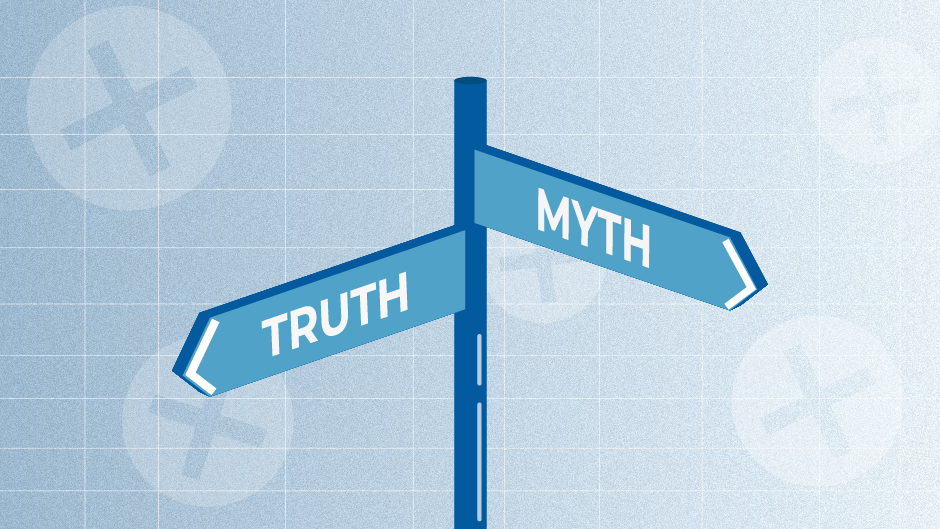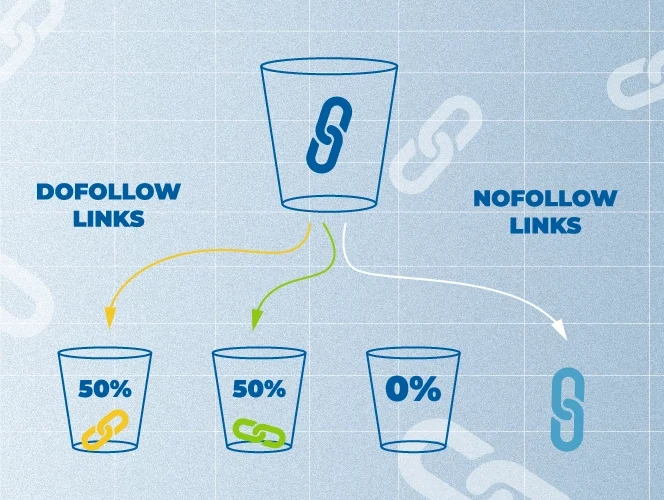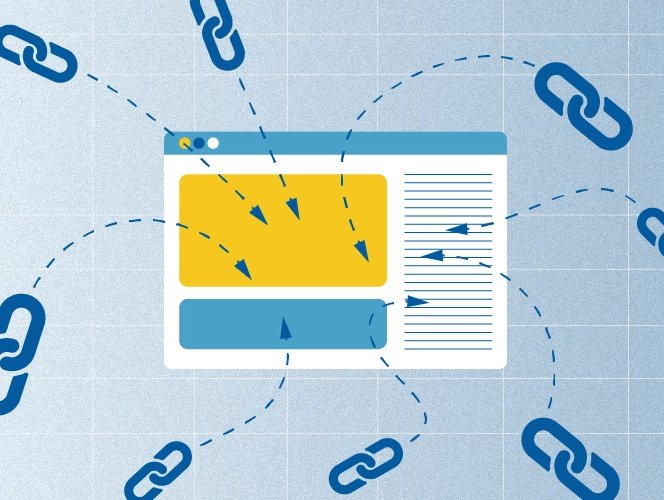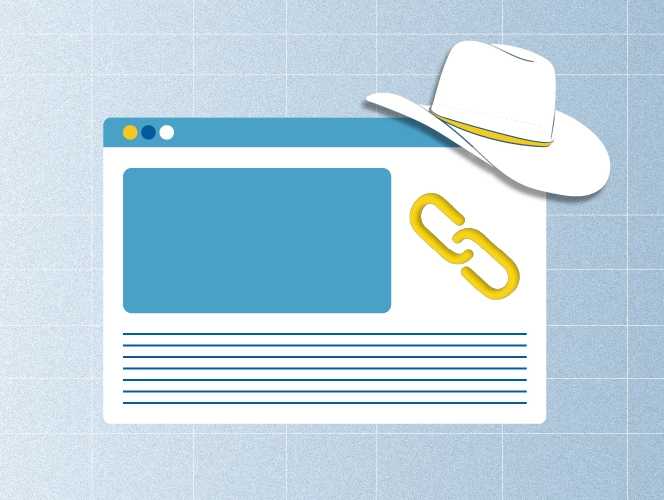If you’ve ever felt confused by mixed advice on link building, you’re not alone. From quick fixes to outdated strategies, it can be tough to know what really works.
We sat down with our CEO to sort fact from fiction and reveal the biggest link building myths. Think of this as your no-nonsense guide to building links the right way.
So, let’s clear things up!
Why is link building important?
Link building is important because it improves your website rankings in the SERP, your domain visibility, and increases brand awareness and traffic to your website. In fact, link building statistics reveal that 95% of SEO professionals consider it essential for success in search engine rankings.
In the next paragraphs, let’s find out what the most common link building myths are and what they’re untrue.
10 Link Building Myths That Are Wasting Your Time
Myth #1: Backlinks from High Spam Score Domains Can Lead to Penalties
One of the most common link building questions is whether a backlink from a high spam score site can harm your ranking. A high spam score doesn’t mean your site is spammy. Instead, it simply shows the percentage of sites with similar 27 features that have been penalized by Google.
Moz’s guidelines also emphasize that the score doesn’t directly affect Google’s ranking or lead to penalties.
So, getting a backlink from a site with a high spam score won’t negatively impact your website if the site is credible and has valuable content.
While assessing spam scores is useful, it’s important not to rely solely on metrics when making link building decisions.
Myth #2: Backlinks from Low DR Websites Are Risky
Domain Rating (DR) is a metric by Ahrefs that measures the strength of a website’s backlink profile. A common myth is that backlinks from low DR websites are risky, but that’s not necessarily true.

Low DR doesn’t automatically mean a website is unreliable. In fact, newer websites or small businesses with low DR can still offer valuable backlinks. The key is to assess the overall trustworthiness of the website and watch out for website red flags like:
- Website content of low quality
- Poor website design
- Excessive spammy outgoing links
- Lack of contact information
- Non-indexable domain, Etc.
In other words, don’t over rely on link building metrics, as they don’t tell the whole story.
Myth #3: Backlinks from Sites with Low or Zero Traffic Are Useless
It’s a common belief, driven by link building myths, that backlinks from low or zero traffic sites have little value.
In reality, the traffic a referring page receives has minimal impact on the backlink itself. Backlinks affect your profile at the domain level, not by the traffic a specific page gets.
But why does this happen?
When it comes to link exchanges, many people aim to get backlinks from high traffic websites while offering links from low traffic ones. This can lead to receiving links from sites with lower traffic, but that doesn’t make them dangerous.
A study by Ahrefs backs this up. Among 44,589 SERPs studied, just 1 in 2,229 had top-ranking pages with links from referring pages with traffic, and about 20% of SERPs didn’t have any such links.
It means that you can still rank your website higher on Google without links from traffic-rich pages, even if other pages in the SERP have them. But, how can I check my ranking on Google to track the impact of these backlinks?
To check your Google rankings, you can use tools like Google Search Console, Ahrefs, or SEMrush to monitor your website’s performance and keyword positions. If you need further guidance in understanding the SEO terms used in these tools, refer to an SEO glossary for definitions that will help clarify any unfamiliar concepts.
Myth #4: Link Exchanges Can Lead to Penalties
Excessive link exchanges that aim to manipulate search rankings are against Google’s guidelines because it believes good content should naturally attract backlinks.
However, not all link exchanges are inherently bad. There are two main types of link exchanges:
- Direct exchanges (A-B): Website A links to Website B, and Website B links back to Website A. This can look manipulative to Google and raise red flags.
- Three-way exchanges (A-B-C): Website A links to Website B, and Website B links to Website C. This approach is one of the best backlink strategies and is much safer, as they don’t directly link to each other and are less likely to trigger penalties.
So, while link exchanges are not welcomed by Google, three-way exchanges are generally a safer and more effective way to build backlinks.
Myth #5: A High DR Equals a Credible Website
While a high Domain Rating (DR) might seem like a sign of credibility, it’s important to remember that it can also be easily manipulated.
Some websites, especially link-selling sites, use tactics like link farms or paid backlinks to artificially increase their DR.
So, always assess the website’s quality by looking out for the red flags mentioned above. Also, be mindful of the backlinks price, as a higher cost doesn’t always equate to better quality, and it’s important to evaluate the true value of each link.
Myth #6: Getting More Than 30 Backlinks Will Trigger a Penalty
The number of backlinks isn’t a problem—what matters is their quality. You can build as many backlinks as you need, as long as they come from reputable and trustworthy sources. To ensure you’re targeting the right sources and building relevant backlinks, it’s best to hire link building consultants who can refine your strategy and help maximize your website’s SEO potential.
John Mueller, from Google, also states in one of the Google SEO office-hours that the total number of backlinks a website has doesn’t matter at all to the search algorithm. They evaluate the quality rather than number of backlinks.
Further reading:
Myth #7: You Need More Backlinks Than Your Competitors to Outrank Them
It’s easy to fall into the trap of link building myths and believe that having more backlinks than your competitors will help you outperform them, but it’s not that simple.
Your competitor could have hundreds of backlinks from poor websites, which won’t do much for their SEO. What really matters is:
- Are these backlinks coming from reputable and credible sites?
- Are they from unique domains? (multiple links from one domain can hurt)
For example, your competitor might have 500 backlinks from news and magazine sites, but you might have 30 good backlinks from reputable SaaS sites, which carry far more weight in terms of SEO.
Myth #8: You Must Add a Sponsored Tag to Links in Guest Posts
It’s required to add a rel=”sponsored” tag, if you’ve paid for the guest post or link placement—failing to do so can lead to penalties from Google.
Google’s John Mueller stated that it’s important to qualify these links in guest posts with the rel=nofollow or rel=sponsored attributes to prevent them from impacting search results.
But here’s the catch: if you add a sponsored tag, the link won’t help your SEO, as it basically tells Google the link isn’t natural.
Further reading:
How to Identify Guest Posting Opportunities
Myth #9 Backlinks from Pages That Don’t Rank for Important Keywords Are Dangerous
It’s a common misconception that backlinks from pages not ranking for major keywords are harmful. In reality, most articles, even those from giants like Ahrefs or HubSpot, don’t rank for important keywords—and that doesn’t make them any less valuable.
What truly matters is the credibility and quality of the website providing the backlink. A good site with relevant content can improve your overall backlink profile, even if the referring page doesn’t rank.
Myth #10 Websites with More Outgoing Links Than Incoming Ones Are Always Selling Backlinks
A high number of outgoing links doesn’t automatically label a website as a backlink seller. Good websites, particularly in the SaaS industry, often link out to useful and informative content.
We recommend paying attention to patterns, as they help separate fact from link building myths. If a website is linking to random or suspicious sites, it might be selling backlinks. But when links are relevant and helpful, there’s no cause for concern. To verify link patterns and track link quality, you can use the best backlink tools available to ensure a comprehensive analysis of any website’s backlink strategy.
Final Thoughts on Link Building Myths
Link building can be confusing, especially with so many myths out there, which can lead you down the wrong path.
Don’t fall into the trap of the link building myths that non-professionals create. Instead, find out the real cause behind them to make informed decisions.
That’s how you’ll build links that deliver results!
FAQ about link building myths
What are link building mistakes?
Practices that search engines consider mistaken or “spammy” are private blog networks, link schemes, links in outdated directories, paid exchanges, etc.
What are the challenges of link building?
Building and maintaining great partnerships, mediocre content, lack of authority or relevant websites, unprofessional contacts, and facing rejection when initiating outreach can be considered link building challenges.
How to ask for a link?
Personalize your message by clearly representing your offer and intention for the partnership. Avoid spam-triggering words or sounding too salesy, and include a call to action that they can follow to increase the chances of their response.

Quiz Time
Let's put your knowledge to the test.
Leave your email below to get a SayNine certificate!
Are you sure?







